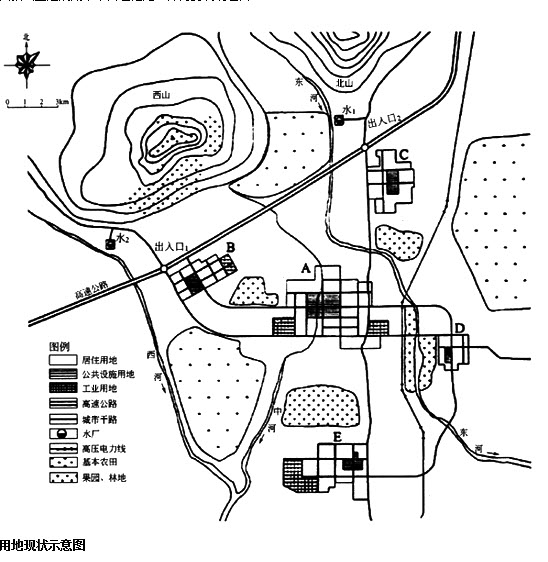某地级市总体规划确定,主城区在现状基础上仍分为5个组团,该市地势西北高、东南低,有3条河流,主导风向东北风,主城区现状常住人口60万人,规划为90万人 (见现状图和规划示意图)。
规划要点如下。
1.城市性质:省城北部区域中心城市,新型工业基地。
2.总体布局:为“二主三副”的组合型布局结构,“二主”为A、E组团,“三副”即B、C、D功能组团,各组团之间保留农田和生态绿地进行分隔。
3.道路交通:增建高速公路出入口3。规划连接各组团的城市快速路系统。
4.工业布局:规划4处工业区,在A组团安排机械制造和生物制药园区,C组团安排新型建材及水泥厂,E组团为电子信息高新技术园区,D组团安排物流中心。
5.在组团隔离带内留出高压电力线走廊,新规划1个水厂,4个污水处理厂。
试指出上述规划中不合理之处,并简要说明理由。


参考答案:
1.总体布局结构为“二主、三副”不合理,(E组团没有成为核心组团的条件)。
2.没有新增加高速公路出入口3的必要。
3.城市快速路系统设置不合理。
4.E组团与A组团之间只有一条城市主干道不合理。
5.在上风上水方向的C组团安排新型建材、水泥厂选址不当。
6.污水厂1在水厂3上游选址不当,污水厂数量偏多。
